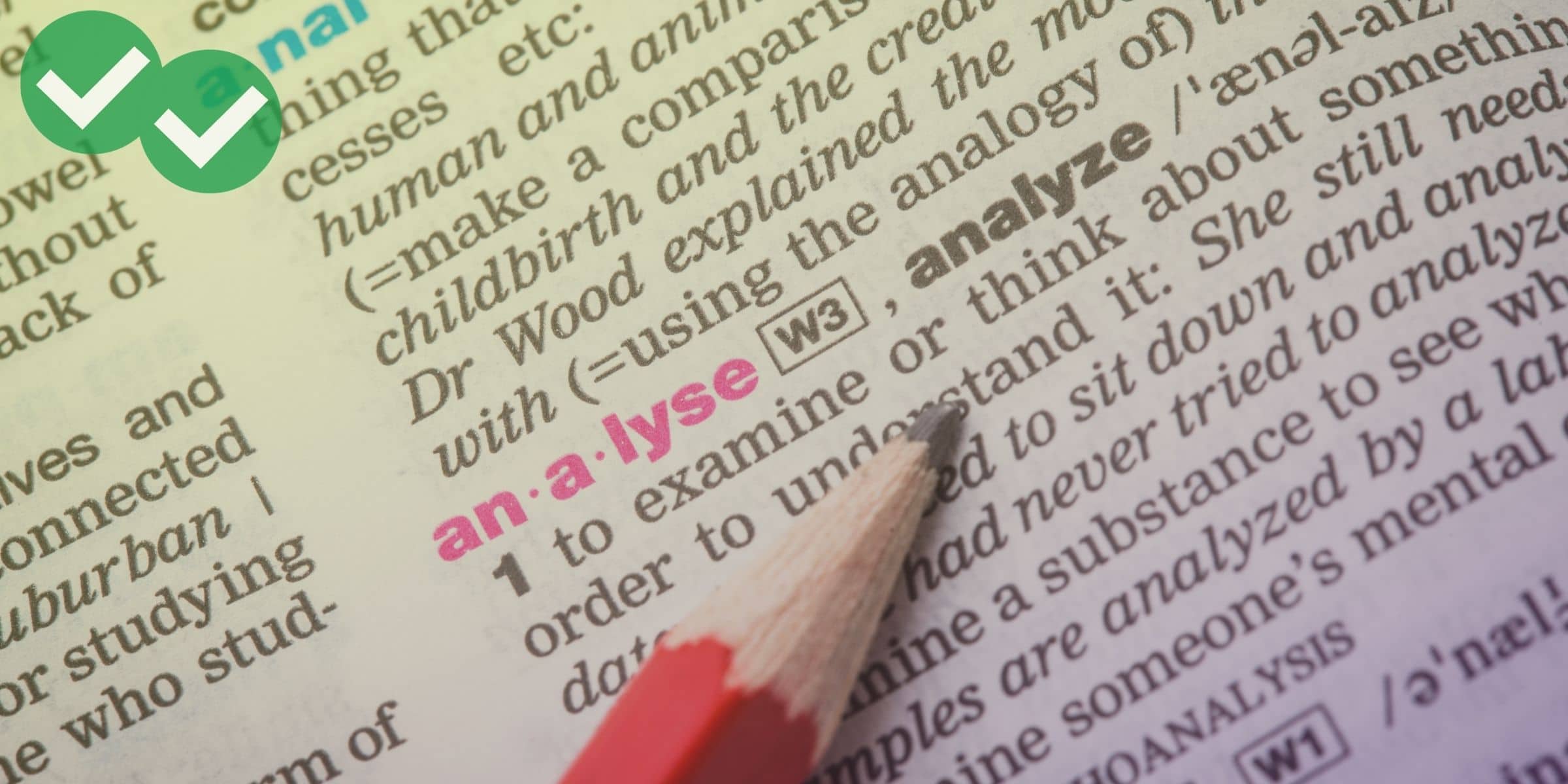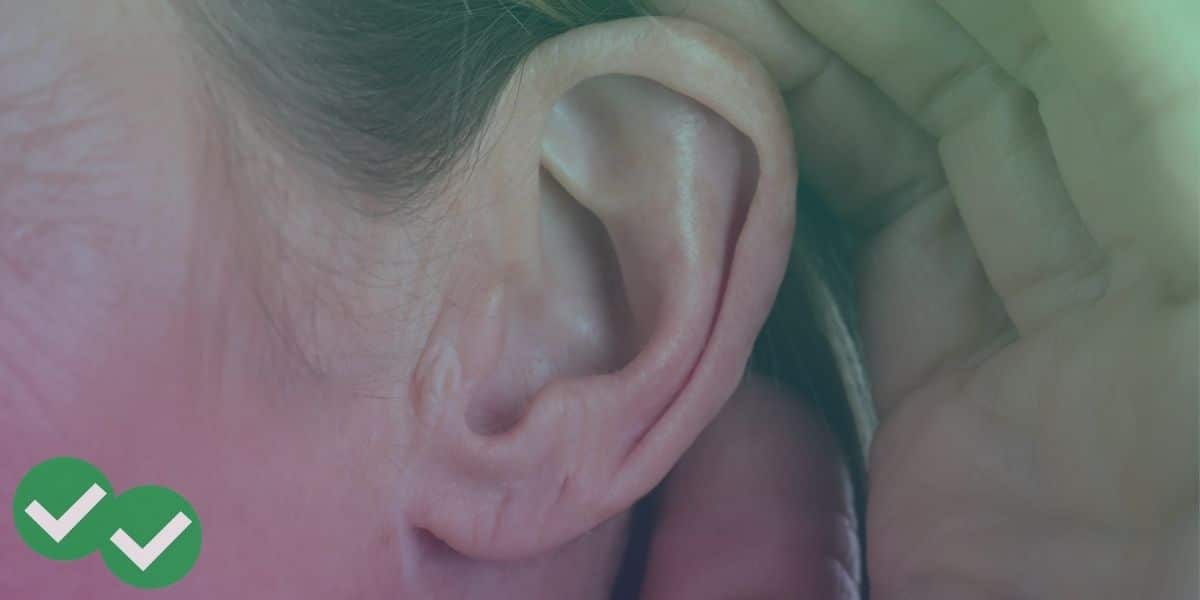
Enter Your Email to Start Your Free TOEFL Practice Test:
In order to prepare yourself for your TOEFL test date you must practice the questions in Reading, Listening, Speaking, and Writing. But successful test-takers must also prepare for the format, timing, and pacing of the TOEFL exam. The very best way to do this is to take a free TOEFL sample test.
It can be hard to find quality materials online, especially if you want a free sample test. But, don’t worry! We are here to help! Magoosh’s TOEFL Experts created a free TOEFL Practice Test just for you. Feel free to jump right in to the TOEFL practice test below. Or, if you’d like to prepare a little first, jump down to the optional test instructions first.
Practice Test Options
On the practice test page, you will have the ability to select from five options:
| Format | Sections | Questions | Time |
|---|---|---|---|
| Full-Length Exam | 9 | 2 Essays 2 Listening Sections 4 Speaking Sections 1 Reading Section |
~2 hours and 25 minutes |
| Writing Section Test | 1 | 1 Essay | ~30 minutes |
| Speaking Section Test | 1 | 1 Speaking Task | ~3 minutes |
| Reading Section Test | 1 | 2 Reading Tasks, 20 questions total | ~25 minutes |
| Listening Section Test | 1 | 3 Listening Tasks | ~36 minutes |
It is recommended that you take the full length TOEFL practice exam for the most test-like experience and most accurate score predictions. If you are running short on time, or if you’ve already taken a full-length practice exam and just want to strengthen your individual skills, then completing a section test is a great way to prepare.
Table of Contents
- What to Expect on the TOEFL Practice Test
- Instructions for the Free Magoosh TOEFL Practice Test
- What you need to know about the TOEFL
- Why do I need to take a TOEFL practice test?
- When should I take a practice test?
- How is the real test day experience different from a TOEFL practice test?
- What score should I aim for on the TOEFL test?
- TOEFL Test Prep Tips and Tricks
- Get in some good TOEFL Reading practice
- Focus on TOEFL Listening practice as well
- For TOEFL Speaking and TOEFL Writing, look at what other test-takers have done
- Use only the best TOEFL practice tests
- Practice your English!
- Build a good study plan
- Reading: Two tasks, 20 total questions
- Listening Section 1: Three tasks, 17 total questions
- Listening Section 2: Two tasks, 11 total questions
- Speaking Section 1: One question
- Speaking Section 2: One question
- Speaking Section 3: One question
- Speaking Section 4: One question
- Integrated Essay
- Academic Discussion Essay
- Factual Information: Locate specific details or facts in the text.
- Inference: Draw conclusions based on the information given.
- Vocabulary: Understand the meaning of a word from context.
- Sentence Insertion: Decide where to insert a new sentence.
- Summary: Identify the main ideas or organize the passage.
- Read actively. Look for main ideas, key details, and vocabulary clues.
- Practice with academic texts in English to get comfortable with similar passages.
- Work on pacing and don’t be afraid to move on to the next question if you are having trouble.
- Understand the Gist: Get the main idea or purpose of the conversation or lecture.
- Listen for Details: Identify specific facts or details from what you heard.
- Understand the Speaker’s Attitude: Figure out how the speaker feels or what they are implying.
- Determine Function: Recognize the purpose of certain statements.
- Connect Information: Understand how different pieces of information fit together.
- Take clear notes while listening—capture key points, not every detail.
- Practice listening to English podcasts, lectures, and talks to improve your focus and comprehension.
- Use TOEFL practice tests with a timer to get used to the new format and time limits.
- Task 1: Independent Speaking
- You’ll be asked to express your opinion on a familiar topic.
- You’ll get 15 seconds to prepare and 45 seconds to respond.
- Task 2: Integrated Speaking (Reading + Listening)
- You’ll read a short passage, listen to a related conversation or lecture, and then respond to a question that combines the two.
- You’ll have 30 seconds to prepare and 60 seconds to speak.
- Task 3: Integrated Speaking (Listening)
- You’ll listen to a conversation or lecture, then respond to a question about what you heard.
- You’ll have 20 seconds to prepare and 60 seconds to speak.
- Task 4: Integrated Speaking (Listening)
- You’ll listen to a short lecture on an academic topic and then summarize it.
- You’ll have 20 seconds to prepare and 60 seconds to respond.
- Independent Speaking: You’ll answer a question about your personal experiences or preferences. For example: “Do you agree or disagree that it’s better to study with music playing?”
- Integrated Speaking (Reading + Listening): You’ll read a passage and listen to a related conversation or lecture. Then you’ll answer a question that ties the two together. For instance: “How does the student feel about the change in university policy?”
- Integrated Speaking (Listening): You’ll listen to a conversation or lecture and answer a question based on the material. This will check how well you can summarize or interpret what you heard.
- Practice speaking English daily to get comfortable with organizing your thoughts quickly.
- Record yourself answering questions and listen back to evaluate your fluency, pronunciation, and structure.
- Stick to the time limits—use a timer while practicing to make sure you don’t rush or go over the limit.
- Task 1: Integrated Writing
- Read a short passage (around 250-300 words) and listen to a related lecture (about 2 minutes long).
- You’ll then write a 150-225 word response summarizing the main points from both the reading and listening. You should explain how the lecture either supports or contradicts the reading.
- Time limit: 20 minutes
- Task 2: Writing for an Academic Discussion
- You’ll participate in a simulated online class discussion. You’ll read a short prompt and several responses from other students. Then, you’ll write a 100-120 word contribution to the discussion, responding to the question and engaging with the opinions of your classmates.
- Time limit: 10 minutes
- Integrated Writing: This task is all about synthesizing information from both a reading passage and a lecture. For example, the reading might present an argument in favor of renewable energy, while the lecture might highlight potential challenges. You’ll need to explain how the points in the lecture either support or oppose the reading.
- Writing for an Academic Discussion: This brand-new task is designed to reflect the kind of discussions you’ll have in university settings. You’ll get a short prompt, like “What is the best way to reduce traffic in cities?” Then you’ll read a few brief responses from other students and write your own response. You’ll need to agree or disagree with the opinions of your classmates and support your position with reasons or examples.
- Practice summarizing: For the Integrated Writing task, focus on summarizing key points from both reading and listening. Be clear and concise—don’t include unnecessary details.
- Engage with the discussion: For the Writing for an Academic Discussion task, make sure you’re actively engaging with your classmates’ opinions. Agree or disagree, but always support your argument with reasons or examples.
- Watch the clock: You have limited time for both tasks, so plan your responses carefully. Make sure you leave enough time to review for grammar and clarity.
- 1 practice TOEFL test at the beginning of your prep to assess your baseline skill level
- 1-2 practice tests during your TOEFL prep to measure your progress
- 1 TOEFL practice test at the end of your TOEFL prep to assess your current score and measure it against your goal score
What to Expect on the TOEFL Practice Test
Test Structure and Format
In the summer of 2023, the TOEFL iBT changed formats to give test takers a shorter, more streamlined test experience. Our free TOEFL practice test was adapted at that time to reflect the new test structure. This means when you opt to take a full practice test you’ll see the following structure:
Reading Section
With the 2023 update, the TOEFL reading section has fewer questions and passages. Instead of 3 to 4 long passages, you now get just 2 passages to read. Each passage is still around 700 words long, but with only 20 questions total, the whole section is more focused. You’ll have 35 minutes to finish, so pacing is even more crucial now.
The topics haven’t changed—they still cover a wide range from science and history to the arts. But remember, you don’t need to be an expert in any of these subjects. The test is more interested in how well you can understand the material and pull out key information.
Question Types
Each passage comes with around 10 questions, and these questions are designed to check how well you understood the text. The question types include:
The reduced number of questions means you can focus more deeply on each one and improve your accuracy.
Tips for Success on the Reading Section
Listening Sections
With the July 2023 update, the TOEFL listening section is shorter and easier to manage. Before, you had to listen to more lectures and conversations, but now, you’ll only face 5 listening tasks. These will include two conversations and three lectures.
In total, you’ll get 28 questions instead of the previous 28-39, and you’ll have about 36 minutes to complete the section. The conversations typically last about 3-4 minutes, while the lectures are about 4-6 minutes long. Don’t worry—you won’t need to take notes on every detail. The questions focus on key ideas and important details, not trivial facts.
Question Types
The types of questions you’ll face haven’t changed much. Each listening passage will have 4-6 questions that test your ability to:
Since the section is shorter, you’ll need to stay focused from start to finish. You won’t get a second chance to listen, so take notes on key points as you go.
Tips for Success on the Listening Sections
Speaking Sections
Unlike the reading and listening sections, the speaking section hasn’t changed in the latest TOEFL update. You’ll still need to complete four speaking tasks in about 17 minutes. These tasks are designed to evaluate how well you can speak English in different situations, from giving opinions to summarizing information from reading and listening materials.
Here’s a breakdown of the speaking sections:
Question Types
Let’s break it down:
Tips for Success in the Speaking Sections
Writing Sections
As of July 2023, the writing section has a new format. You’ll now face two tasks instead of the previous two, but with a major twist. The first task, Integrated Writing, remains the same, but the second task, the new Writing for an Academic Discussion, replaces the previous Independent Writing task.
Here’s a breakdown of the two tasks you’ll complete:
Question Types
Let’s take a closer look at what each task will ask you to do:
Tips for Success in the Writing Sections
Instructions for the Free Magoosh TOEFL Practice Test
This is a full-length TOEFL test. You should budget about 2 hours and 25 minutes for the test itself and another 1.5 hours to review the test results and questions. Remember that increasing your TOEFL score doesn’t just rely on doing questions, it’s also key to carefully review what you get wrong and what you get right. Good luck!
The best way to use this test is to first answer all of the questions, and then review answers with the answer key and score report that appears at the end.In your score report, you’ll see that there are also links to explanation videos, in case an answer is confusing. We highly recommend watching these videos! Why?
Well, once you have finished reviewing your practice TOEFL test, you will have a tally of which questions you answered correctly and which questions you answered incorrectly. The only way to improve your TOEFL score is to understand why you are making mistakes and missing questions. That way, you can learn from your mistakes on the TOEFL practice test and avoid making the same errors on the real test. Watching explanation videos will help you learn from your mistakes.
Once you finish your free practice test you’ll be able to see your estimated section and overall scores. Don’t get discouraged if these scores are lower than what you are hoping for. The purpose of a free practice test is to establish your baseline score, get used to the TOEFL format, and find areas of improvement to focus on. Every question you get wrong is an opportunity to diagnose exactly where you are losing points. This allows you to make an informed plan of study to get those points back!
All of these TOEFL test practice questions come from the Magoosh TOEFL product. If you like what you see in the TOEFL practice test, consider purchasing a TOEFL Premium Plan today.
What you need to know about the TOEFL
As you know, the TOEFL is a test of English as a foreign language, and is formatted in four different sections. Each section tests one language skill: reading, listening, speaking, and writing. In the TOEFL practice test above, you’ll find a full version of each section. The TOEFL is, of course, a timed test, and a full-length TOEFL iBT Test takes a total time of about 2 hours.
What is the TOEFL used for?
Well, keep in mind that the TOEFL test measures English language proficiency needed for university study. Specifically, the exam features standard North American English, the kind you might encounter at U.S. or Canadian universities (with the exception of non-English universities in places like Quebec and Puerto Rico). It won’t contain non-American forms of English found in other native speaking countries such as Australia, New Zealand, The U.K., and so on.
While the test is primarily taken by international students seeking university level admission into U.S. and Canadian schools, TOEFL test scores are not just used in university settings. They can also be used in high school and technical school admission process or immigration offices of many different countries. In fact, the TOEFL is an official language test for immigration in both Australia and the United States and is used similarly by a number of other government agencies.
What can you expect on the TOEFL?
In our TOEFL practice test and on the real TOEFL, Reading and Listening test your English-language ability with multiple choice questions, while Speaking and Writing feature tasks. In both of these two sections, the tasks can be independent tasks where you’ll give a response based on your own opinions or integrated tasks where you will give a spoken or written summary of something you hear or read.
In the listening portions of a good TOEFL practice test – the Listening section and the integrated tasks for Speaking and Writing – the English language skills revolve around university classroom lectures and conversations related to student life. The conversations typically involve one university student and one faculty member. All speech there will be delivered by native English speakers. The English language level in TOEFL Reading is a bit more advanced. Here, English skills are geared toward textbook reading in an academic setting during the first or second year of university. So Reading represents somewhat more advanced academic content and higher English language proficiency, compared to the rest of the test.
Why do I need to take a TOEFL practice test?
So, do you need to take a full-length TOEFL practice test? Yes! It is very important to take full-length TOEFL practice exams before your test day. This will help you get used to moving from section to section on the TOEFL test. It will help you learn to switch gears from reading to listening to speaking to writing. And it will prepare you for taking the test under conditions similar to the ones you’ll experience on test day. Getting a great TOEFL score isn’t just about mastering the material, it’s also about developing stamina, focus, and test-appropriate skills.
The TOEFL exam is a few hours long and you don’t get much time to rest. You need to train your body and mind to be able to sit and take a strenuous exam. This is where a TOEFL practice test has a lot of value. Taking timed, full-length (or slightly shortened) TOEFL sample tests will help you do this.
Not only are practice tests good for improving your stamina, but they are also a great way to discover your strengths and weaknesses, and understand where (and why) you make mistakes. Are you good at English spelling, but find speaking in English challenging? Can you easily do well on the essay, but need to improve your reading comprehension skills?
A TOEFL mock-test answers these questions by showing your strengths and weaknesses, and allowing you to turn those weaknesses into strengths! So it’s a very powerful form of TOEFL practice.
When should I take a practice test?
It depends on how long you have until your TOEFL test date. Ask yourself these questions: Are you preparing for a TOEFL that’s two weeks away or two months away? Have you already taken a test or are you just starting to study? This will make a big difference in the role of the TOEFL practice test in your studies. If you have a long time to study, then you can plan to fit in a few extra practice tests along the way.
However, if you have at least one month to study for your TOEFL, we recommend taking:
After your final TOEFL practice test, take some time to review and refine the TOEFL test skills that need last-minute help.
How is the real test day experience different from a TOEFL practice test?
Typically, TOEFL exams are administered in test centers, although the TOEFL Home Edition is also used when test center examinations are not possible. In this case, you take the test over your own Internet connection at home. Regardless of whether you live in a region with TOEFL testing centers or not, the test experience will be similar in terms of format and timing. This TOEFL practice test is designed to replicate that experience for the TOEFL iBT exam.
What score should I aim for on the TOEFL test?
So how well do you need to do on this English language test? That depends on the minimum score requirement of the programs you’ll apply to. For more information on TOEFL scores as a form of eligibility criteria, see the post “What is a Good TOEFL Score?” Ultimately know that you can get a good score without having perfect English skills. If you want specifics for score requirements at the exact schools you’re applying to, admissions officers at your target schools will likely be happy to give you more information! In the meantime, you can use our TOEFL practice test to measure what your score is like right now! You’ll be shown your score level at the end of the test!
TOEFL Test Prep Tips and Tricks
We hope that you find all of these TOEFL resources helpful! Please let us know if you have any questions as you work through the Magoosh sample test. And remember: if you sign up for Magoosh TOEFL, you will have access to email support from our team!
So, beyond taking a TOEFL practice test and possibly signing up for a Magoosh TOEFL subscription (or a free trial), what else can you do to reach your personal high score? Here are a few extra tips to get you to your target score on the real exam.
Get in some good TOEFL Reading practice
Be sure to seek out good reading passages to practice for the Reading section of the TOEFL. Our post on the best TOEFL Reading practice can help you seek out TOEFL-like reading in the different topics you’ll see on academic passages of the actual test. And be sure to take a TOEFL practice test or two of just the Reading section. This section requires special skill and focus.
Focus on TOEFL Listening practice as well
Remember to seek out good TOEFL Listening resources. Your TOEFL Listening prep should include the different kinds of audio files found on the real TOEFL exam. Remember that a listening passage can be a conversation between a student and a campus employee, but academic lectures are also a major part of any TOEFL practice test.
Remember that the lectures found in a TOEFL practice test aren’t just lectures from English teachers. Instead, the scholarly talks in TOEFL Listening cover a variety of academic topics. Employ good TOEFL Listening strategies so that you understand all of the essential information you hear on the TOEFL test.
For TOEFL Speaking and TOEFL Writing, look at what other test-takers have done
In these two sections of the TOEFL test, giving correct answers is more complex than just selecting the right answer choice. In this part of your TOEFL practice test, you have to speak and write essays. For the Speaking test and for the Writing questions, it helps to see sample responses from other test-takers.
When it comes to model responses, Magoosh has you covered! We have a page that includes sample responses for every Speaking task, and model essays for both the Integrated Writing task and the Academic writing task. Click here to access this TOEFL Speaking and Writing tutorial.
In addition to providing good TOEFL practice test questions, the ETS website also has model responses to a number of questions to help you refine your own writing skills and speaking skills. These responses are based on retired prompts from the official exam. Magoosh offers a roundup of these important TOEFL test materials. Here is our roundup of links to model Speaking responses. And here’s our roundup of TOEFL Writing examples.
Use only the best TOEFL practice tests
Make sure that you are using high quality practice questions as you prepare for the actual TOEFL. Official questions from ETS are the very best, because they are taken from real previous tests. As such, they cover the same variety of topics as the actual exam, with the same types of questions and with TOEFL test sections that are truly authentic. Any TOEFL practice test from ETS is a good one!
Magoosh also aims for this higher level of quality. Our expert instructor who leads our TOEFL test prep carefully studies ETS materials and imitates them as closely as possible, and our whole team has years of experience making high quality TOEFL prep. We put this kind of careful work into the TOEFL practice test in this article too!
That said, many unofficial TOEFL test prep resources have a “TOEFL problem,” where their practice questions simply aren’t that accurate. This is particularly true of many of the free TOEFL prep resources that are in widespread use. If your TOEFL prep feels a little “off” for any reason, you may want to seek out higher quality TOEFL preparation courses.
Practice your English!
To do well on the TOEFL test, improve your overall English by practicing it as much as you can. Seek out English conversations with people whose native language is English, or with anyone who is comfortable speaking English with you. Use social media to communicate in English. Watch English language TV and movies, listen to English music, and so on.
Build a good study plan
Once you’ve taken our free TOEFL practice test and gotten those great TOEFL prep materials, what you need is a good TOEFL study plan. For examples of how you could arrange your study timeline, see Magoosh’s TOEFL study plans and guides.





Leave a Reply